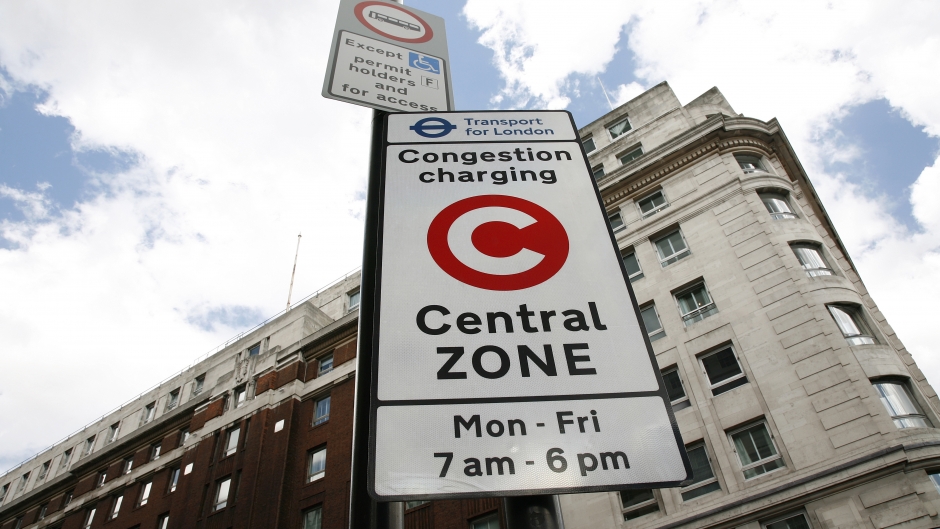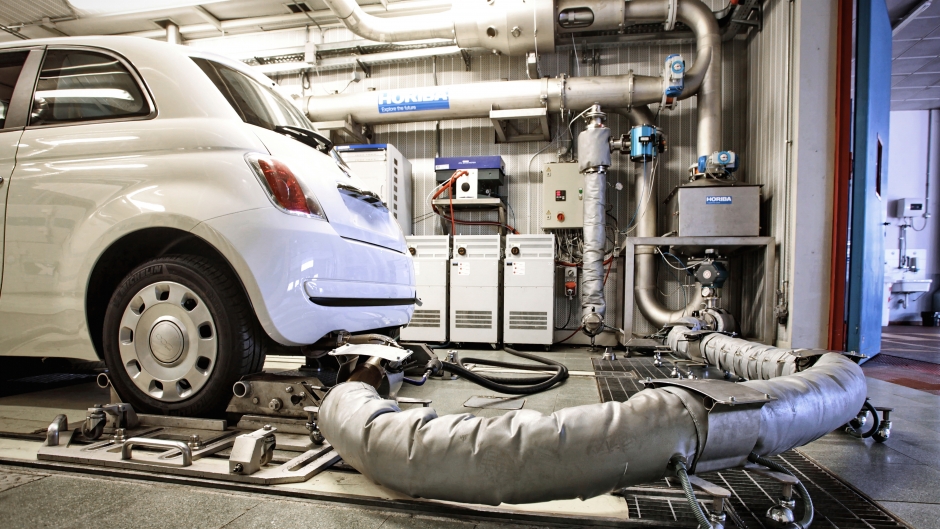Car emissions and g/km meaning
Driving a low- or zero-CO2 emission car can result in big tax-related savings. We explain the details, including the meaning of g/km

With the 2030 UK ban on petrol and diesel cars drawing ever closer, along with increasingly stringent emissions standards and clean air zones within an increasing number of cities, car makers are working harder than ever to reduce the environmental impact of their petrol and diesel cars - the most direct of which is exhaust emissions.
Restrictions limiting the use of traditional combustion engines (those that require fuel such as petrol and diesel to work) continue to be rolled out by the government, and these are being gradually tightened as we head towards a car emission-free future. The Euro 6 emission standard introduced back in 2015 is just one of those measures, while the likes of the ULEZ and other low emission zones are in force to reduce pollution in city centres.
But it's not just the manufacturers that are having to pull their green socks up. Drivers are also beginning to have their automotive choices nudged towards lower-emission options as higher taxes and other costs are now being imposed on petrol and diesel-powered cars that produce higher levels of emissions.
The latest road tax rules impose an initial charge on cars registered since April 2017 relative to their exhaust emissions figures; higher emissions lead to a higher bill. This can be anything from £10 to £2,365 - check the latest car tax rules - and is then followed by a continued annual tax cost of £165 thereafter.
The only way to remove the cost of road tax entirely is to drive an electric car that produces zero emissions. But what are emissions? Read on for everything you need to know.
What does g/km mean?
When a petrol or diesel engine burns fuel it produces carbon dioxide (CO2), along with a handful of other harmful gases. This CO2 is then emitted through the car's exhaust pipe. The amount of CO2 a car emits into the atmosphere is measured in grams per kilometre - often shortened to g/km - which is considered to be a basic indication of a car's impact on the environment and air quality.
Every car that makes its way off of the production line is required to undergo a standard laboratory test (WLTP), which calculates the volume of its carbon dioxide emissions. This is a legal requirement that should be clearly stated for every car, so you should always be able to find a car's emissions figures without too much difficulty.
In general, the lower this figure, the less fuel that vehicle should use. For example, a car with 90g/km CO2 emissions, should have good fuel economy, whereas one with 180g/km CO2 emissions is likely to use twice as much fuel and cost much more to run. Drivers looking to reduce their running costs ought to be looking for cars with lower emissions, therefore.
CO2 emissions in g/km and car tax

The impact that CO2 emissions have on your car tax will depend on how old it is, as there are several different road tax systems in place. Which one applies to your car is determined by when it was registered.
Cars registered after April 2017
Newer cars, registered after April 2017, are taxed under the latest system. The first year of tax, when a car is brand new, is based on CO2 emissions. It's easy to overlook because it's normally included in a car's purchase price, but it can add substantially to your car's cost.
Any car with an official rating of 0g/km CO2 is exempt from car tax. Only electric or hydrogen-powered cars qualify for this.
Cars with super-efficient petrol and diesel engines, as well as the rising numbers of hybrid vehicles, which combine an electric motor with a petrol or diesel engine for improved economy, qualify for a reduced rate of £10 or less if they emit 50g/km or less.
There are 13 tax bands, based on CO2 emissions, and the amount charged for any car in its first year depends on which tax band that it falls into. Each band covers a range of CO2 emissions (eg 101-110g/km CO2).
Diesel cars are penalised under this system and are pushed up a band - unless they meet so-called RDE2 emissions standards - to make the cost of taxing them greater, reflecting the higher proportion of non-CO2 pollutants that diesel vehicles can emit.
After the first year, drivers pay a flat rate of £165 each year. Only vehicles with no CO2 emissions from their exhaust - those powered by electricity or hydrogen - are exempt. Hybrids and alternatively-fuelled cars incur a reduced rate of £155. if your car had a list price of £40,000 or more when new, you'll be charged an additional £355 wealth tax from the second to sixth year it is on the road.
Cars registered before April 2017
Vehicles that were registered between 1 March 2001 and 31 March 2017 have tax rates that are calculated entirely according to their CO2 emissions. Any car with an official rating of under 100g/km CO2 is exempt from car tax. This includes cars with efficient petrol and diesel engines, as well as the rising numbers of electric cars, plus hybrid vehicles, which combine an electric motor with a petrol or diesel engine for improved economy.
Cars emitting more than 100g/km CO2 pay tax on a sliding scale from £20 per year to £630. The amount depends on which tax band that they fall into. Each band is a range of CO2 emissions (eg 101-110g/km CO2).
CO2 emissions in g/km and company car tax
Choosing a vehicle with low CO2 emissions can save you hundreds - or even thousands - of pounds in company car tax. Cars with low g/km CO2 ratings are placed in lower company car tax bands, reducing the level of tax that drivers pay.
CO2 emissions in g/km and Congestion Charge

Zero-emission vehicles - which account for electric cars and hydrogen-powered vehicles - are curently exempt from the London Congestion Charge, though this is set to change on 25 December 2025.
Electric vehicle owners and those with hydrogen-powered cars are still not able to simply drive into the capital and avoid payment: first you'll need to register your vehicle with Transport for London (TfL), the body that manages the charge. TfL requires a copy of your car's registration document and charges a £10 fee for registration, which needs to be paid each year.
How to find a car’s g/km CO2 figure
Car brochures - online and paper versions - typically carry full details of the CO2 emissions of each car. If you’re looking on BuyaCar, you can see the emissions figure for any vehicle by viewing its technical specification. This figure is also held by the DVLA for your specific car and can be checked by searching for the number plate on the 'Get vehicle information from DVLA' tool.
A car’s CO2 figure can be affected if you fit larger wheels, or choose a version with four-wheel-drive or an automatic gearbox, for example. In some cases, you might find that the difference pushes your car into a different tax bracket. If in doubt, the DVLA tool should confirm the figure for specific cars you're considering buying.
Is petrol or diesel better for g/km CO2?
Diesel cars are more efficient than petrol versions, as they are able to get more energy out of each litre of fuel. This means that they generally have lower CO2 emission levels, making pre-April 2017 diesel cars cheaper to tax than equivalent petrol ones.
As they use less fuel, they are often cheaper to run as well, although they can be more expensive to buy in the first place; knowing whether to choose petrol or diesel isn’t always straightforward, though high-mileage drivers typically are better off with diesel cars and those who cover less than 12,000 miles or so every year - or mainly drive in towns - are better off with petrol models.
For more than a decade, diesel cars benefitted from lower car tax rates, thanks to their comparatively low CO2 emissions. This has helped to boost their popularity, but has also increased the level of other dangerous pollutants in the atmosphere, which are mainly produced by diesel engines. This policy has now been reversed, with changes in the first-year tax rate now penalising diesel cars.
Are car CO2 emissions dangerous?
CO2 is not a direct risk to human health in the same way as other exhaust gases, such as nitrogen oxides and tiny pieces of soot called particulates. CO2 instead acts as a greenhouse gas, and its contribution to global warming is the reason why governments across the world are forcing car manufacturers to lower CO2 emissions.
Reducing emissions from British vehicles is a major part of the government's plan to cut greenhouse gases in an effort to ensure that global warming does not cause temperature rises of more than 2C over pre-industrial levels.
New emissions test: how CO2 emissions are calculated
CO2 emissions are calculated in an official testing procedure that is now unified across the world, called the Worldwide Harmonised Light Vehicle Test Procedure (WLTP). The tests are conducted in a laboratory and are designed to better reflect how cars are driven in the real world than the previous test, which dated back to the 1980s.
The WLTP test is divided into four parts with different average speeds: low, medium, high and extra high to replicate city, urban, countryside and motorway driving. Each part contains a variety of driving phases, stops, acceleration and braking phases.
Cheating the emissions test to lower g/km CO2

The infamous VW emissions scandal centred on the amount of harmful nitrogen oxides (NOx) produced by diesel-powered cars. But it also highlighted serious issues with the European tests that were used to calculate CO2 emissions, along with emissions of other pollutants and each car’s official fuel economy figure.
The laboratory test was designed decades ago for cars that didn’t have the power or equipment of modern models. The test also contained leeway for manufacturers to legally optimise their cars for the test, including charging up the car's battery to 100% and inflating tyres to higher-than-normal pressures.
This meant that emissions and fuel consumption in the real world can be considerably higher than the figures recorded in laboratory tests.
